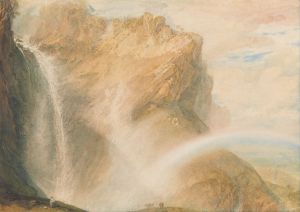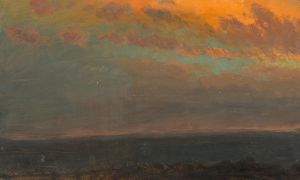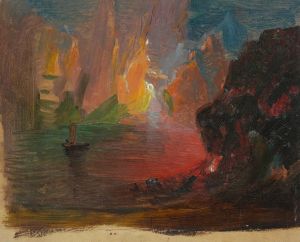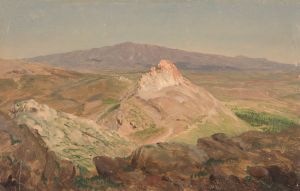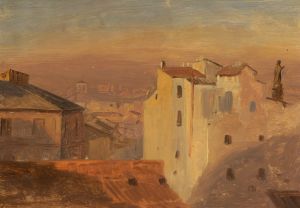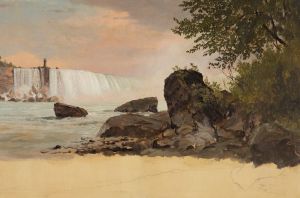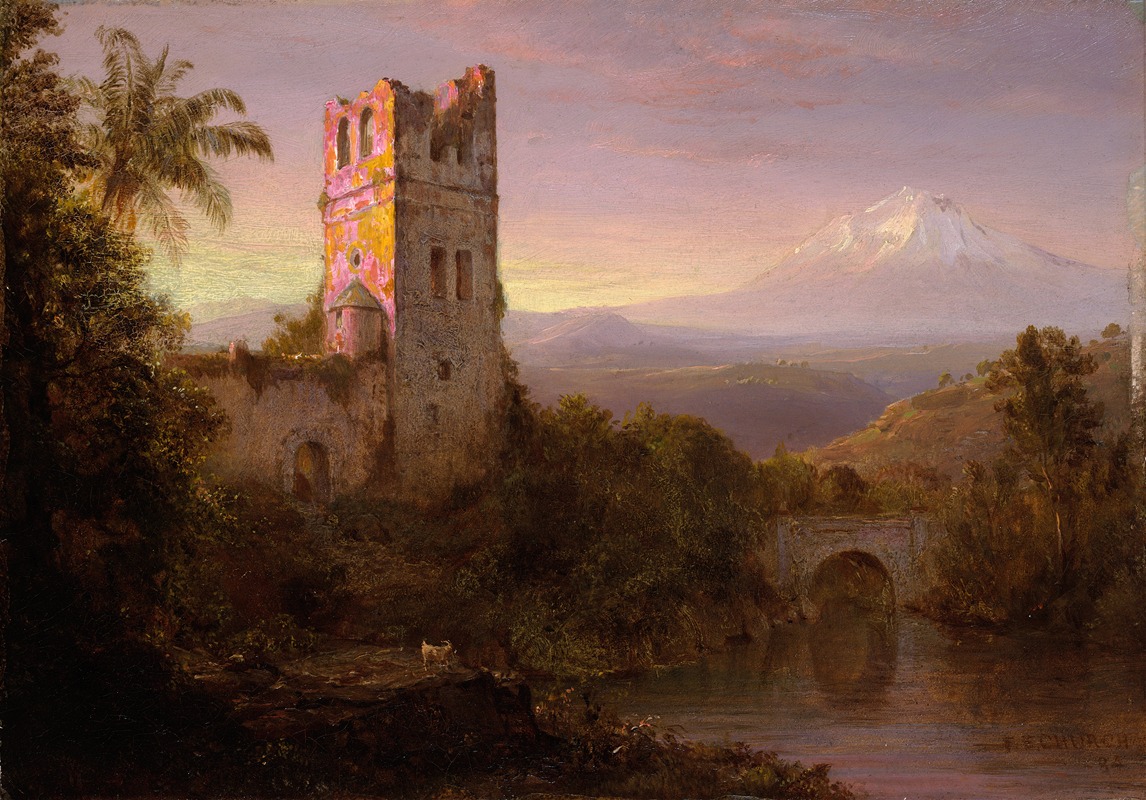
Chimborazo Volcano
A hand-painted replica of Frederic Edwin Church’s masterpiece Chimborazo Volcano, meticulously crafted by professional artists to capture the true essence of the original. Each piece is created with museum-quality canvas and rare mineral pigments, carefully painted by experienced artists with delicate brushstrokes and rich, layered colors to perfectly recreate the texture of the original artwork. Unlike machine-printed reproductions, this hand-painted version brings the painting to life, infused with the artist’s emotions and skill in every stroke. Whether for personal collection or home decoration, it instantly elevates the artistic atmosphere of any space.
Frederic Edwin Church's "Chimborazo Volcano" is a notable painting by the American landscape artist, who was a central figure in the Hudson River School, a mid-19th century American art movement known for its realistic and detailed portrayals of nature. Church, born in 1826 in Hartford, Connecticut, was a student of Thomas Cole, the founder of the Hudson River School. Church's works are characterized by their grand scale, meticulous detail, and dramatic use of light and color.
"Chimborazo Volcano" was painted in 1864, during a period when Church was deeply inspired by his travels in South America. This painting is one of several works resulting from his expedition to the Andes in 1853, a trip that was partly inspired by the writings of the German naturalist and explorer Alexander von Humboldt. Humboldt's "Kosmos," which detailed his explorations and scientific observations in South America, had a profound influence on Church and many of his contemporaries.
The painting depicts Mount Chimborazo, a stratovolcano in the Andes of Ecuador, which was believed at the time to be the highest mountain in the world. Church's portrayal of Chimborazo is both majestic and scientifically informed, reflecting Humboldt's influence. The painting captures the volcano's snow-capped peak rising above the surrounding landscape, with a foreground rich in tropical vegetation. The composition is marked by a dramatic contrast between the lush greenery of the lower slopes and the stark, icy summit, emphasizing the diverse ecological zones that Humboldt described.
Church's attention to detail is evident in the precise rendering of the flora and the atmospheric effects, which convey a sense of the sublime and the vastness of nature. The painting is also notable for its use of light, with the sun illuminating the peak of Chimborazo and casting shadows across the landscape, creating a dynamic interplay of light and shadow.
"Chimborazo Volcano" reflects Church's interest in the intersection of art and science, as well as his commitment to capturing the beauty and complexity of the natural world. The painting was well-received in its time and contributed to Church's reputation as one of America's leading landscape painters. It remains an important example of 19th-century American art and is part of the collection at the Smithsonian American Art Museum.
Church's work, including "Chimborazo Volcano," continues to be celebrated for its artistic and historical significance, offering insights into the 19th-century American perspective on nature and exploration. The painting not only showcases Church's technical skill but also his ability to convey the awe-inspiring power of the natural world, a theme that resonates with viewers even today.







